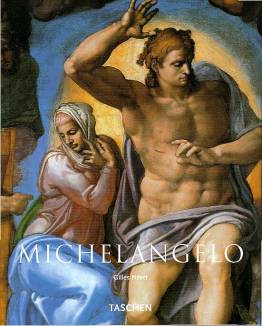|
|
|
Umschlagtext
" ... ohne die Sixtinische Kapelle gesehen zu haben, kann man sich keinen anschauenden Begriff machen, was EIN Mensch vermag."
Johann Wolfgang von Goethe Rezension
Der schon zu Lebzeiten als Genie verehrte Michelangelo Buonarroti hat nicht nur mit seinen Deckenfresken der Sixtinischen Kapelle die Abendländische Kunstgeschichte geprägt. Er ist am Beginn der Neuzeit ein entscheidender Vertreter der Hochrenaissance und des Manierismus. Sein „Mose“ für das Juliusgrab, sein „David“ und seine „Pietà“ im Petersdom sind weltbekannt und prägen unser kulturelles Gedächtnis. – Das vorliegende Bändchen bietet auf ca. 100 S. eine Ersteinführung ins Werk mit knappen, aber aussagekräftigen Texten und (im Preis-Leistungs-Verhältnis) hervorragenden, oft ganzseitigen Bildreproduktionen. - Auch Religionspädagog/inn/en sei dieser Titel empfohlen.
Thomas Bernhard für lehrerbibliothek.de Verlagsinfo
Michelangelo between earthly passions and fear of God During the Renaissance, the great homosexuals, from Leonardo da Vinci and Botticelli to Michelangelo and Raphael, transformed the history of art, attaining to ever closer imitation of nature whilst altering it to their taste. From their art, ambiguous beings were born, half man, half woman; female breasts were planted on male busts and a young man's gaze peeped out beneath the eyelids of a Madonna. From his earliest youth, Michelangelo never ceased to suffer, and thereby to create. He attempted to reconcile the apparently conflicting forces that inhabited him: earthly passions and fear of God. Hence the edifice devoted to beauty, celestial and infernal alike, that Michelangelo raised to the glory of God. It has no equivalent nor descendance. His predecessors aspired to Heaven through faith alone; Michelangelo sought to rise through the contemplative exaltation of beauty. His passions found expression in the human body as it emerged from the Creator's hand. And they did so even on the ceiling of a papal chapel: the Sixtine. This exposed him to a chorus of derision from prudish critics, who accused him of exhibiting paganism in a place of religion, and who clothed his immodest Titans in painted "breeches". It was Michelangelo's curse to remain a colossus outside and apart from his time. It is the birthright of the comet to inspire fear and awe in the spectator. The spectacle of such glory can sear the tender eye. Inhaltsverzeichnis
6
Ein Steinmetz 1475-1505 22 Der Papst und der Künstler 1505-1513 48 Träume eines Titanen 1513-1534 64 Die Glut der Liebe 1535-1547 82 Zum Ruhme Gottes 1547-1564 90 Chronologie |

 Bei Amazon kaufen
Bei Amazon kaufen